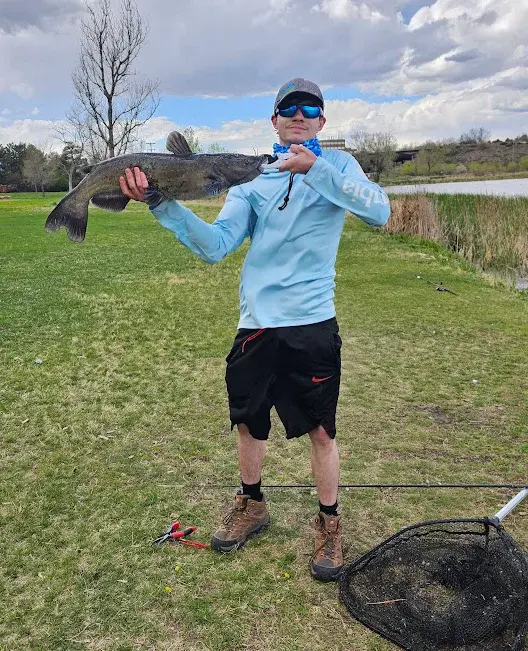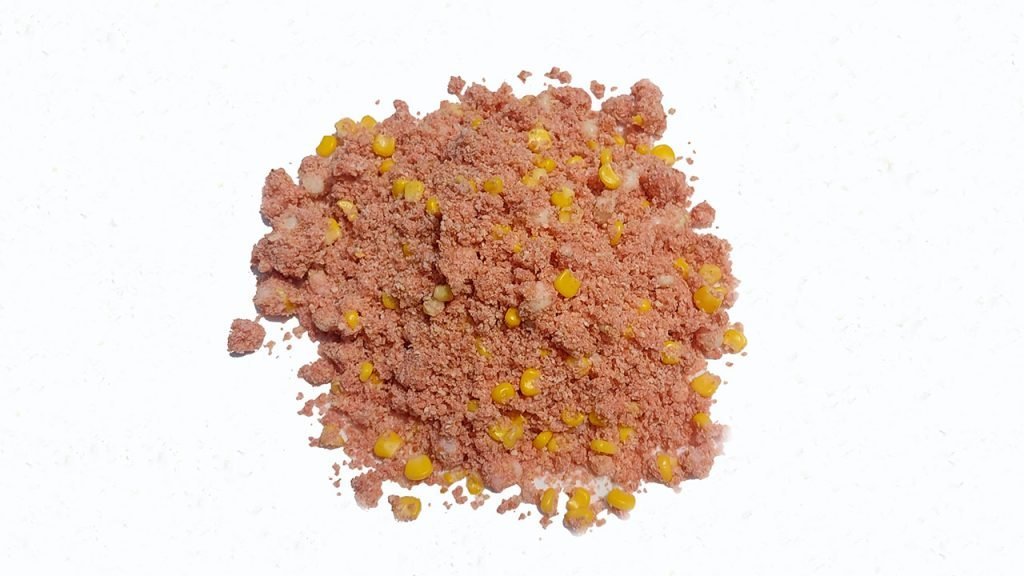How to Catch Catfish: 5 Proven Tips for Beginners

In this guide, we’ll cover everything you need to know about how to catch catfish, from choosing the right bait to setting up beginner-friendly rigs. Catfish are one of the most popular freshwater game fish in North America. Their unique appearance, marked by whisker-like barbels, and their powerful fight make them a favorite target for anglers of all levels. You can catch catfish in rivers, lakes, reservoirs, and ponds using a variety of techniques. Whether you’re just starting out or brushing up on your skills, success with catfishing comes down to using the right bait, targeting the right spots, and understanding their behavior throughout the seasons. Whether you’re targeting channel cats or flatheads, this catfish fishing guide gives you everything you need to get started.
Best Time to Catch Catfish
Catfish are most active during low-light conditions, making timing one of the most important factors in your fishing success. If you’re learning how to catch catfish from shore, focus on shallow areas at night when fish come closer to feed.
Top times to fish for catfish include:
- Early morning (before sunrise): Especially productive in warm summer months when catfish move into the shallows to hunt.
- Late evening (around sunset): Catfish tend to feed aggressively during the transition from light to dark.
- Nighttime: This is prime time for catfishing, especially during summer. Night fishing from the bank or anchored boat can produce big results.
- Overcast or rainy days: Cloud cover reduces light penetration, encouraging catfish to roam and feed more actively during daylight hours.
In summer, catfish are more likely to move into shallow areas at night to feed. During winter, they stay deep, and bites may be more subtle and sporadic. Use your local knowledge or a depth finder to locate deep holes where cold-weather cats tend to group up.
Best Catfish Baits

Catfish have an exceptional sense of smell and taste, so bait selection plays a crucial role. They’re opportunistic feeders and often go for the stinkiest, most flavorful offerings. If you’re wondering what the best bait for catfish is, it often comes down to strong scent and natural oils. Chicken liver and cut bait remain at the top of the list for many anglers
Top-performing baits include:
- Chicken liver: A classic and affordable choice, especially for channel catfish.
- Cut bait: Pieces of fish like shad, bluegill, or herring are excellent for big blues and flatheads.
- Nightcrawlers: A versatile bait that works well in muddy water or for smaller catfish species.
- Dip bait: Pre-made, cheese-based or blood-based baits designed to cling to treble hooks or sponge rigs.
- Shrimp: Fresh or slightly rotten shrimp can be irresistible to hungry catfish.
- Hot dogs: Surprisingly effective, especially when soaked in garlic powder, Kool-Aid, or Jell-O mix for added scent.
Experiment with local bait to find what works best in your area.
Best Rigs for Catfishing
Your choice of rig affects how your bait presents and how likely you are to get a solid hookset.
Slip Sinker Rig
The go-to setup for most catfish anglers. It allows the catfish to pick up the bait without feeling the weight of the sinker, which helps prevent spooking.
Santee Cooper Rig
A variation of the slip sinker rig, this includes a small float (or peg float) above the hook. It keeps your bait suspended just off the bottom—perfect in muddy or weedy areas.
Three-Way Rig
Ideal for fishing in fast-moving rivers. A three-way swivel keeps your bait in the strike zone without getting swept away, and it can also help avoid snags.
For beginners, the slip sinker is the simplest and most effective. As you gain confidence, you can experiment with other rigs based on water conditions and target species.
Where to Find Catfish

Location is everything when targeting catfish. Understanding where they hide and feed increases your chances of landing one. Learning how to catch catfish also requires to learn where to find catfish.
In Rivers
- Deep holes behind current breaks
- Outside bends in the river channel
- Undercut banks and cut-outs
- Fallen trees, root systems, and log jams
In Lakes and Ponds
- Submerged brush or timber
- Drop-offs and deep ledges
- Inlet/outlet pipes or culverts
- Creek channels feeding into the main lake
In Reservoirs
- Near dam walls and spillways (high oxygen zones)
- Points where feeder creeks or rivers enter
- Rock piles or underwater humps
Gear and Tackle for Catfishing
If you’re learning how to catch catfish from shore, using a rod holder and keeping your bait anchored near structure can make a big difference. Having the right setup makes it easier to handle big fish and detect subtle bites.
Rod:
- Use a medium-heavy or heavy power rod with a fast-action tip. This helps you feel bites and gives you the strength to control large catfish. We recommend Berkley’s spinning rod found HERE
Reel:
- Both spinning and baitcasting reels work. Make sure your reel has a smooth drag system and can hold plenty of line.
Line:
- Monofilament (15–30 lb): Good stretch and affordable.
- Braided (30–50 lb): Strong and abrasion-resistant, ideal around structure.
Hooks:
- Use circle hooks (size 4/0 to 8/0) for easy catch-and-release and consistent hooksets.
- J-hooks also work, especially for cut bait, but require faster hooksets.
Final Tips
- Be patient—catfish often take time to find your bait.
- Use a rod holder so you’re not constantly holding your rod.
- Keep your bait fresh and check it often.
- Use scent attractants if needed.
These catfish fishing tips will help you stay patient, improve your presentation, and land more fish consistently.
Catching catfish can be a rewarding experience, especially once you learn the basics. With the right bait, rig, and location, you’ll be pulling in channel cats, flatheads, or blues in no time. Now that you know how to catch catfish, grab your gear and hit the water! Looking for new gear? Check out our honest fishing gear reviews before your next upgrade.
💡Takeaways
- 📌Fish when the light is low.The best time to catch catfish is early morning, late evening, or at night—especially in summer when they move to shallow water to feed.
- 📌Choose smelly bait for more bites.Chicken liver, cut bait, and garlic-soaked hot dogs are among the best bait for catfish thanks to their strong scent and oil content.
- 📌Use beginner-friendly rigs.Start with a slip sinker rig to keep your bait on the bottom while letting the catfish take it without resistance.
- 📌Focus on underwater structure.Look for catfish in deep holes, submerged timber, drop-offs, and current breaks—especially near river bends or inlet channels.
- 📌Match your gear to the fish.Use a medium-heavy rod, strong line (15–30 lb), and circle hooks (4/0–8/0) for solid hooksets and easier catch-and-release.
- 📌Stay patient and keep your bait fresh.Catfish can take time to bite. Use rod holders, check your bait often, and don’t be afraid to add scent attractant to increase your chances.
FAQ
What is the best method to catch catfish?
The best method to catch catfish is bottom fishing with strong-smelling bait. Most anglers use a slip sinker or Santee Cooper rig to present the bait on or just above the bottom. Patience and location are key—target deeper holes, submerged structures, or channel edges where catfish are known to feed.
What is the best bait for catfish?
The best bait for catfish includes chicken liver, cut bait (like shad or bluegill), stink bait, nightcrawlers, and even hot dogs soaked in garlic. Catfish have a strong sense of smell, so bait with a strong scent tends to work best. Match the bait to the species: flatheads prefer live bait, while channel cats go for stinkier options.
What time of day do catfish bite the most?
Catfish bite best during low-light hours, such as early morning, dusk, and nighttime. In warm weather, catfish move to shallow areas at night to feed, while during colder seasons, they stay in deeper water and feed sporadically throughout the day.
What is the best rig for catching catfish?
The slip sinker rig is the most popular and effective rig for catching catfish. It allows the bait to sit on the bottom while giving the fish the freedom to bite without resistance. For river fishing, a three-way rig works well, while the Santee Cooper rig is excellent for keeping bait slightly off the bottom.
Should catfish bait sit on the bottom?
Yes, in most cases, catfish bait should sit directly on the bottom. Catfish are bottom feeders and rely on their whiskers (barbels) to detect food. However, slightly lifting the bait off the bottom using a float can also attract curious fish and increase hookups, especially in weedy or muddy areas.
How to setup a catfish rig?
To set up a basic catfish rig, start by sliding a 1–2 oz sinker onto your main fishing line. Then, add a plastic bead below the sinker to protect the knot. Next, tie a swivel to the end of the main line to stop the sinker from sliding down further. Attach a 12–24 inch leader line with a 4/0 to 8/0 circle hook to the other end of the swivel. Finally, bait the hook with your preferred catfish bait and cast into a spot where catfish are likely to be feeding. This classic slip sinker setup is simple, effective, and a favorite among catfish anglers.


